Livestock plays an indispensable role in global agriculture, contributing approximately 40% of the sector’s total value. This sector not only supports the livelihoods of nearly 1 in 5 people worldwide, particularly in developing regions, but also provides essential resources such as meat, milk, and other by-products. However, livestock is highly vulnerable to a variety of diseases that not only affect animal health but also have far-reaching consequences for human well being, food security, and economic stability. Diseases in livestock reduce productivity, increase veterinary costs, and often result in losses that ripple through the entire supply chain—from smallholder farmers to global food markets. Evaluating the scale of this burden has been historically challenging due to the complex nature of livestock systems and the interplay of various factors such as nutrition, management, and environmental changes.1
Similarly, in the Kingdom of Saudi Arabia (KSA), livestock plays a pivotal role in the agricultural sector, contributing 43% to the agriculture GDP and holding significant economic, social, and cultural importance. Livestock supports millions of small-scale farmers, with around 150,000 to 200,000 smallholder families relying on it for their livelihoods. As KSA moves forward with its Vision 2030, which emphasizes sustainable development and agricultural transformation, the livestock sector, particularly small ruminants, continues to be a cornerstone of nutrition, food security, and rural livelihood. The Kingdom’s National Livestock Improvement Program highlights the potential of the sector, particularly in addressing the growing demand for animal products such as red meat, where imports currently cover 70% of the requirement during religious occasions.2
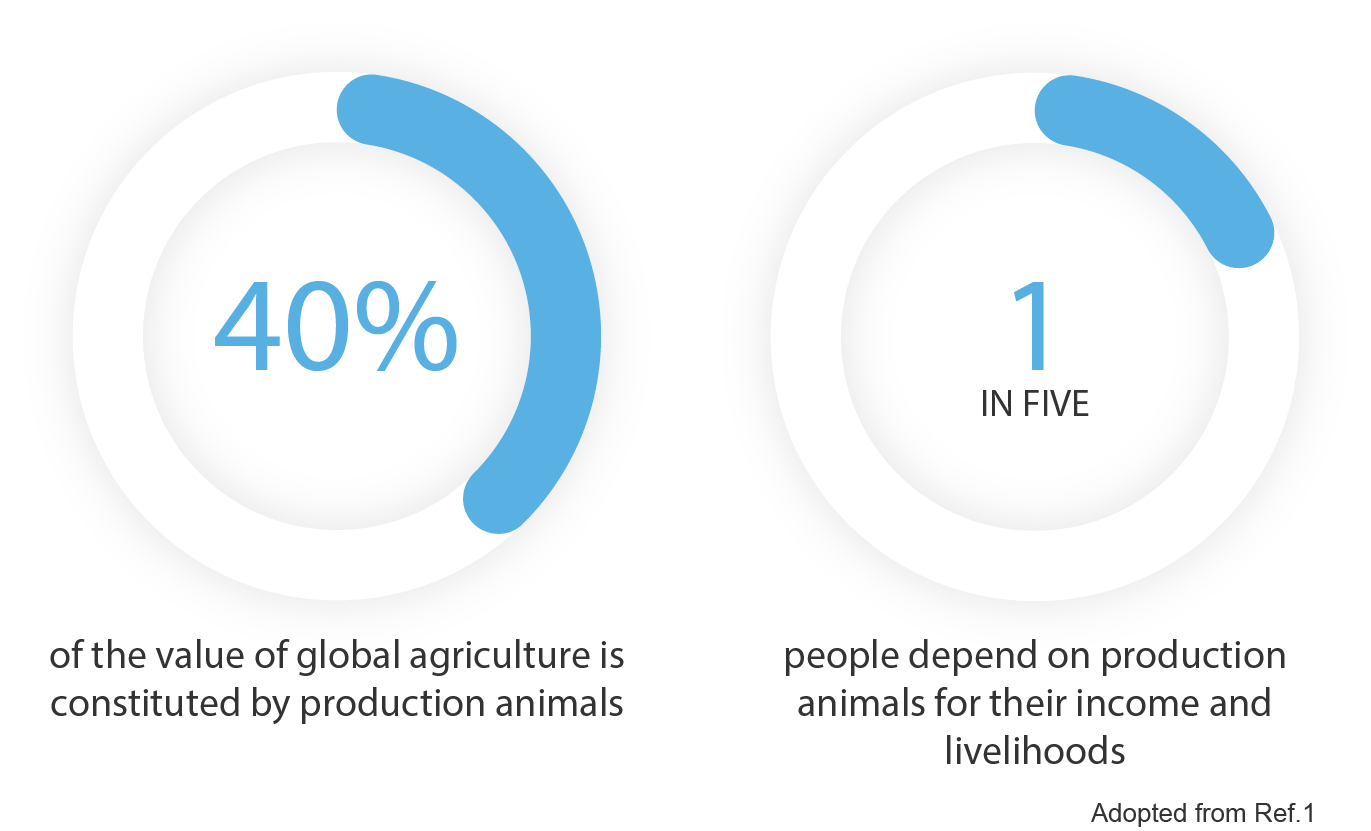
One of the most significant and economically devastating diseases in dairy cattle is bovine mastitis, an inflammation of the udder caused by bacterial infections. Mastitis can be classified as clinical(can be further sub-divided into per-acute, acute, and sub-acute depending on degree of the inflammation), subclinical(hidden), or chronic (mild , with gland shrinkage also known as indurative mastitis) with each form affecting milk quality and production differently, table 1. The disease in dairy cattle is primarily caused by bacterial intra-mammary infections (IMI), which can be classified into two types: contagious and environmental. Contagious pathogens, such as Staphylococcus aureus, Streptococcus agalactiae, and less common ones like Mycoplasma bovis, are transmitted from cow to cow during milking and live on the udder and teat skin. These bacteria can establish sub-clinical infections, leading to elevated somatic cell counts (SCC).3
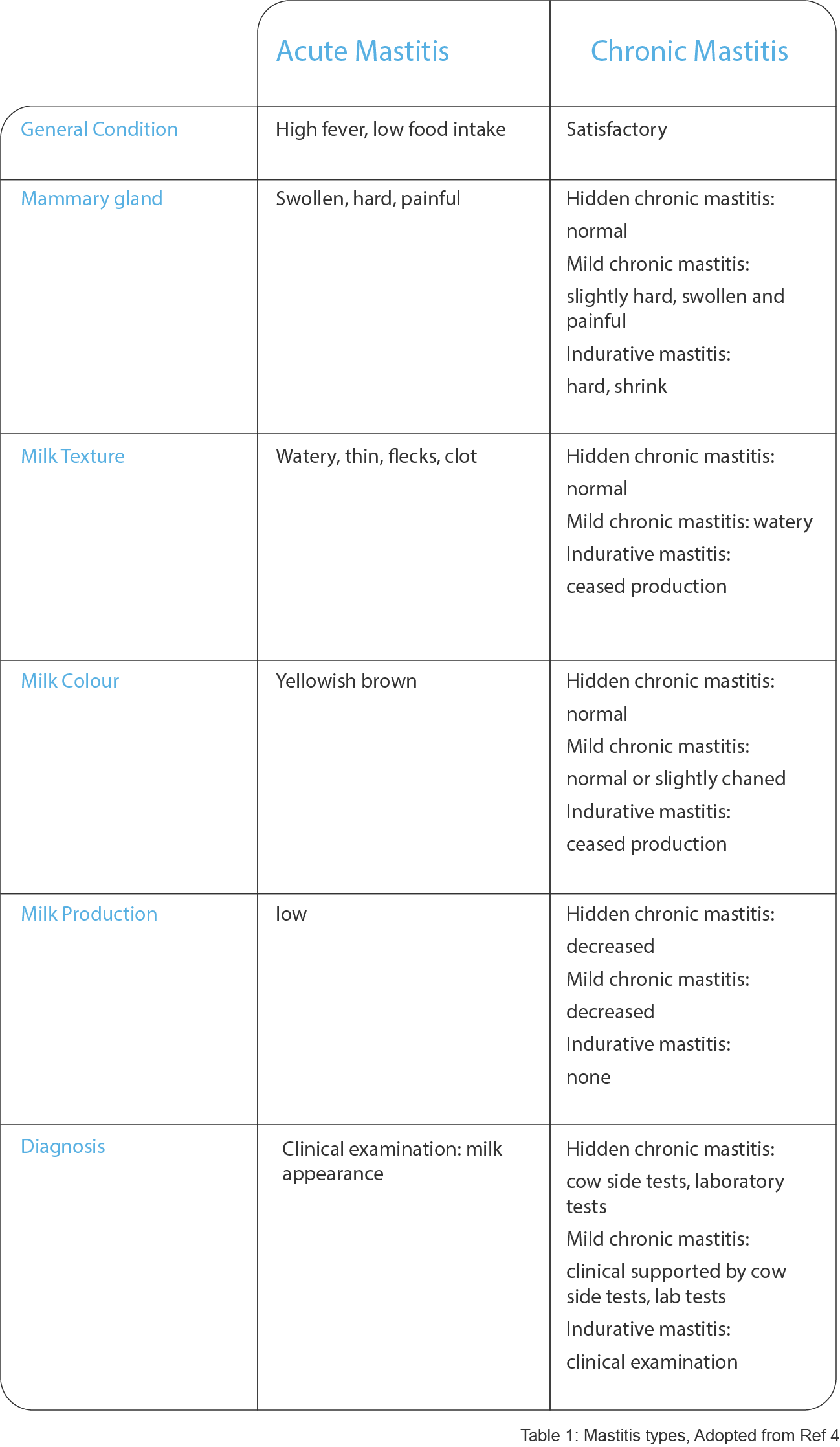
Five-point plan introduced by National Institute for Research in Dairying (NIRD) since 1960s is effective in controlling contagious mastitis pathogens . The five points are: i) identify and treat clinical cases; ii) post milking teat disinfection; iii) DCT; iv) cull chronic cases; v) routine maintenance of milking machine . Unfortunately, the five-point plan is not very effective against the environmental pathogens and hence, is coupled with other appropriate strategies to control mastitis infections Environmental pathogens, like Escherichia coli and Streptococcus uberis, reside in bedding and the herd’s environment. They infect the udder during milking or when the cow’s immune system is compromised. Pathogens like Staph. Aureus can also produce biofilms, making them resistant to antibiotics and harder to treat. Maintaining a clean and comfortable environment for the herd can significantly lower the risk and severity of mastitis. Factors such as overcrowding, dirty floors, damp bedding, inadequate ventilation, and hot, humid weather create favorable conditions for the growth of mastitis-causing pathogens, increasing the likelihood of infection in cows.3
Moreover, the economic burden is considerable, with mastitis reducing milk yields, increasing veterinary costs, and, in severe cases, leading to the premature culling of affected cows. Thus, it is of major importance to improve milking hygiene and reducing cow-to-cow transmission are essential, though antibiotic resistance has prompted the search for alternative treatments, including natural remedies and vaccination efforts .3
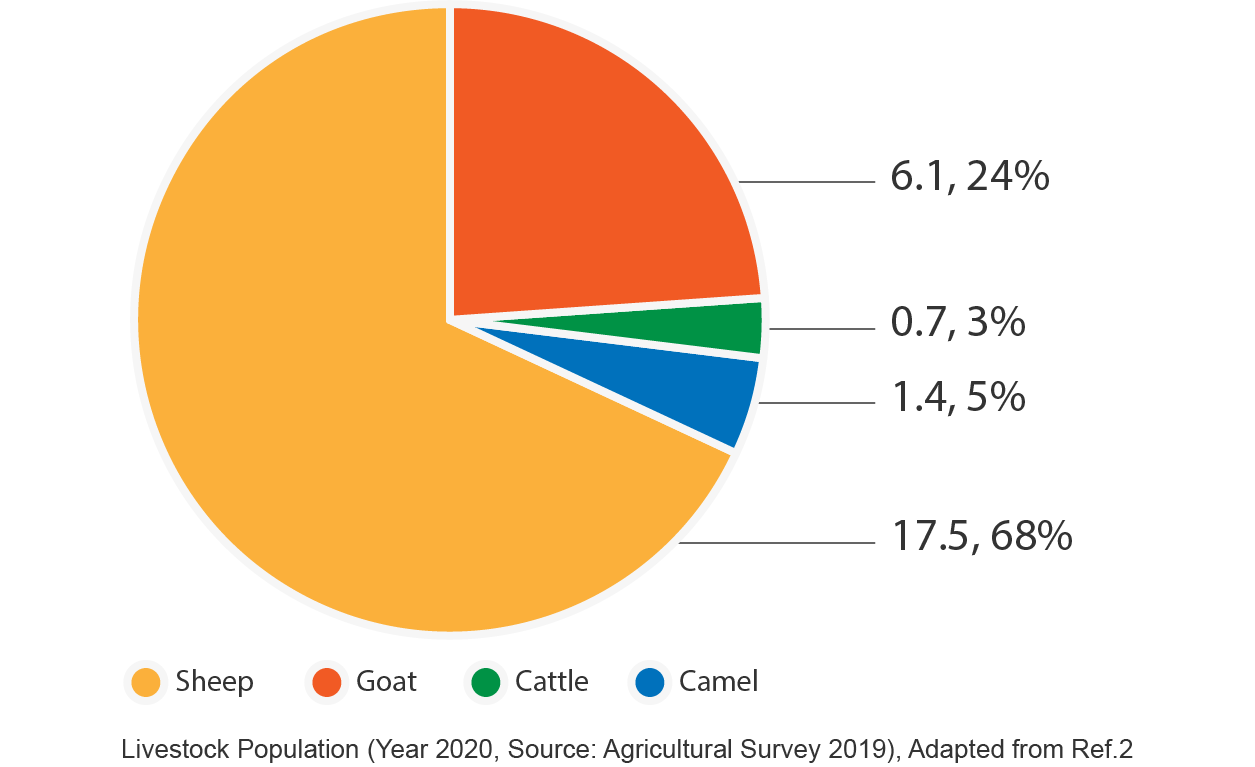
Respiratory diseases in livestock represent another significant health challenge, affecting a wide range of species including cattle, sheep, and goats. These diseases, such as bovine respiratory disease (BRD), are often caused by a complex mix of viruses, bacteria, and fungi, with pathogens like Pasteurella multocida, Mycoplasma bovis, and Mannheimia haemolytica being closely associated with outbreaks. The economic and welfare impact of respiratory diseases is considerable, as they lead to reduced productivity, increased treatment costs, and in severe cases, mortality. Effective management requires a multifaceted approach involving early diagnosis, vaccination, and better farm management practices, such as reducing stress during transportation and co-mingling .5
In the case of BRD, understanding the differences in pathogenesis between beef and dairy cattle is crucial when considering vaccine efficacy. While BRD can affect cattle of all ages, two distinct age-related conditions stand out: enzootic calf pneumonia, common in young dairy calves, and shipping fever, which affects older beef calves. These differences underscore the need for tailored vaccination strategies and management practices for each group to address the specific timing and conditions that lead to peak BRD incidence.6
To add-on the risk facing livestock owners are enteric and digestive diseases which are significant health concerns in livestock, particularly in high-yielding dairy cows, due to their high energy and nutrient demands. Digestive disorders often arise from imbalances in diet, especially from high grain feeding, which leads to issues like subacute ruminal acidosis (SARA) and hindgut acidosis. These conditions disrupt the normal function of the gastrointestinal tract by lowering the pH, impairing microbial balance, and reducing the effectiveness of nutrient absorption. It is noted that high-grain diets increase the acidity in the reticulo-rumen, shifting microbial populations and creating conditions for opportunistic pathogens to thrive. These changes can cause inflammation and breakdown of the gastrointestinal barrier, allowing harmful endotoxins and pathogens to enter the bloodstream, leading to systemic health issues. The gastrointestinal health of livestock is crucial for overall productivity, as poor gut health can result in reduced milk yields, lower body condition scores, and increased susceptibility to other diseases.8
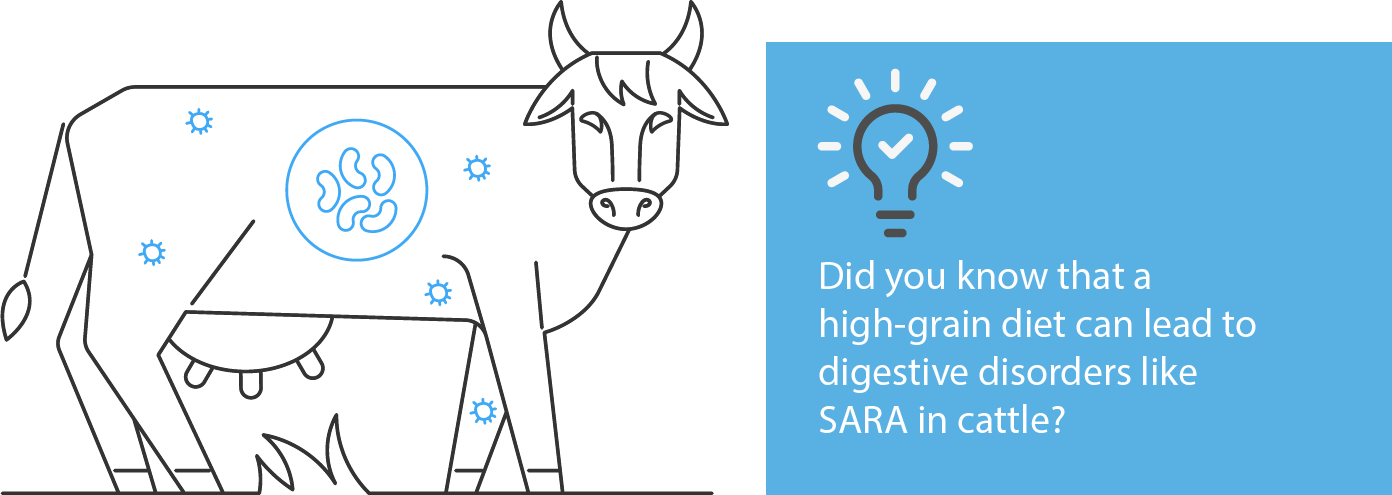
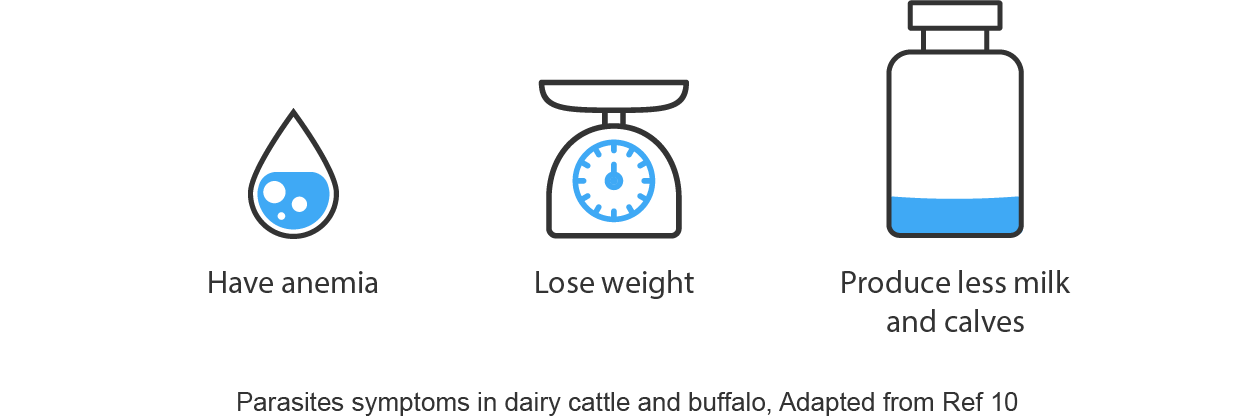
So effective prevention and control of livestock diseases is essential for maintaining herd health, productivity, and economic sustainability. As outlined below, various strategies must be employed to minimize the impact of both infectious diseases and parasitic infestations.¹¹
The environment plays a critical role in disease prevention. Ensuring that livestock has a clean, safe, and comfortable living space helps reduce exposure to pathogens and parasites.
Regular cleaning of barns, proper manure management, and maintaining dry, non-slip surfaces are vital.¹¹
Additionally, nutrition is crucial, with particular attention to ensuring that livestock, especially young animals, receive proper feeding, including colostrum for calves. Balanced nutrition improves immunity, making animals more resistant to infections and parasites.¹¹
Vaccination is another cornerstone of disease prevention, offering protection against region-specific diseases. Working closely with veterinarians to follow proper vaccination schedules can significantly reduce the risk of disease outbreaks. In conjunction with vaccination, regular parasite control through deworming and de-ticking programs helps prevent parasitic infestations, which can severely impact both the health and productivity of livestock.¹¹
Another key element of disease prevention is movement control. It is essential to avoid introducing new animals from areas where infectious diseases are present and to separate sick animals from the healthy herd to prevent the spread of disease.¹¹
Early diagnosis and treatment of diseases are crucial to preventing their escalation. Observing animals for signs of illness, such as changes in behavior, appetite, or physical condition, and acting quickly, can protect the overall herd.¹¹
That said, despite the significance of the livestock sector in the world and focusing on Saudi Arabia, several challenges hinder its optimal growth and sustainability. Animal health and biosecurity constraints are major issues, with frequent disease outbreaks, high mortality rates, and weak monitoring systems. The absence of a robust early warning system and standardized herd health protocols makes it difficult to maintain the health status of flocks. Additionally, improper disposal of dead animals poses a serious risk for disease transmission, further exacerbating the issue.²
Moreover, there are gaps in the research and extension support systems, with limited access to modern technologies and innovative practices. This includes a lack of quality genetics, feed resources, and advanced husbandry techniques, all of which contribute to low agricultural production and productivity. The sector struggles with adopting cutting-edge technologies that could improve livestock health and output.²
To address these challenges, Klybeck is loyally stepping in to offer comprehensive pharmaceutical solutions and other innovations tailored to the specific needs of Saudi Arabia’s livestock sector. With our focus on delivering products that enhance animal health and biosecurity, Klybeck is well-positioned to support Saudi Arabia in overcoming these obstacles and reaching the goals outlined in Vision 2030. By providing strategies that improve disease control, nutrition, and overall herd health, Klybeck is contributing to the sustainable development of the country’s livestock industry

With the right solutions and support, Saudi Arabia’s livestock sector is on a promising path to bridging these gaps and achieving sustainable growth. A comprehensive approach to disease prevention-encompassing environment management, nutrition, vaccination, parasite control, and movement regulation-will ensure better animal health and reduce the economic losses associated with livestock diseases.¹¹
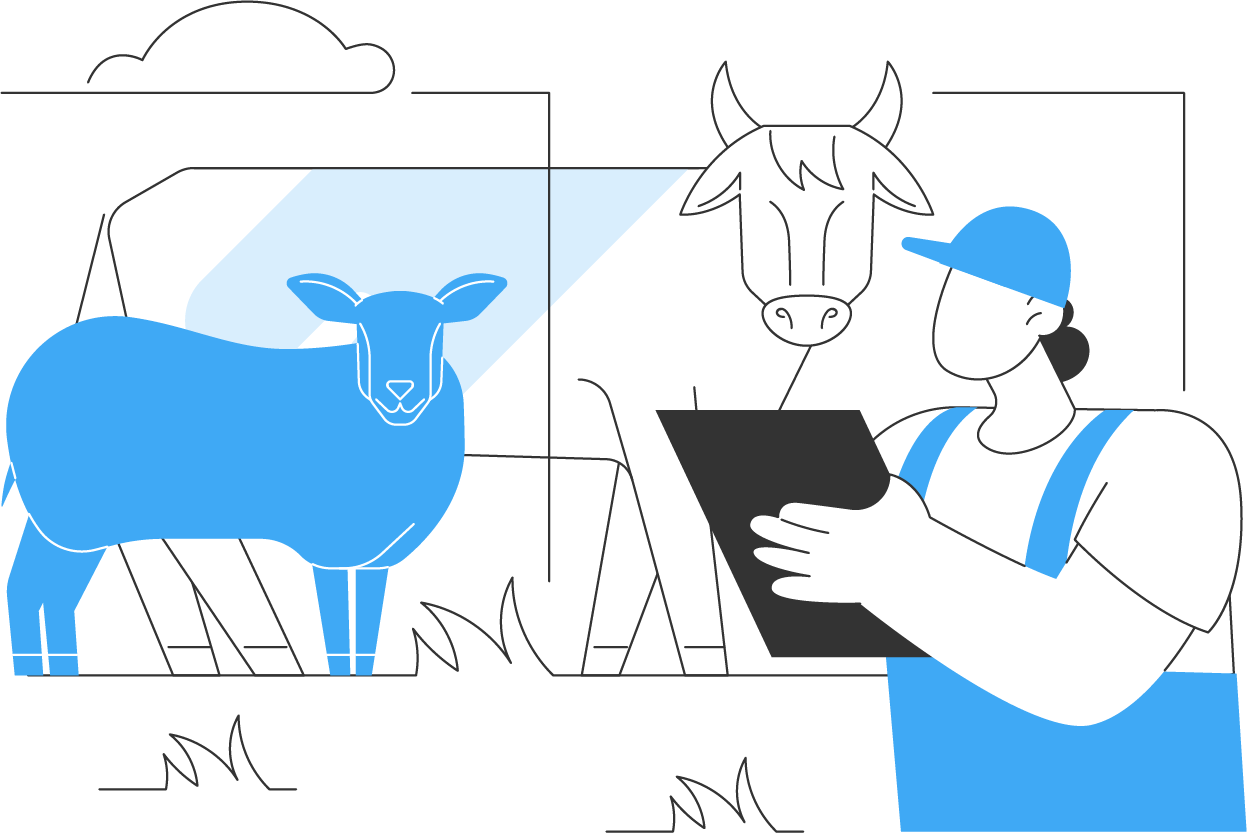

1. The global burden of animal disease. World Organisation for Animal health(n.d).
Available at https://gbads.woah.org/. Last accessed 22-10-2024
2. Livestock production system in KSA and strategies for strengthening small
ruminant livestock production system in KSA. Food and Agriculture Organization of
the United Nations(2022) Available at :
https://www.mewa.gov.sa/reefea/attachments/%D9%82%D8%B7%D8%A7%D8%B9
%20%D8%B5%D8%BA%D8%A7%D8%B1%20%D9%85%D8%B1%D8%A8%D9%8A%2
0%D8%A7%D9%84%D9%85%D8%A7%D8%B4%D9%8A%D8%A9/LIV-2022-Strategie
s_small%20ruminant%20production%20in%20KSA_comprehensive_TC.pdf Last
accessed 23-10-2024
3. Cheng, W. N., & Han, S. G. (2020). Bovine mastitis: risk factors, therapeutic
strategies, and alternative treatments — A review. Asian-Australasian Journal of
Animal Sciences, 33(11), 1699–1713. https://doi.org/10.5713/ajas.20.0156
4. Small-Scale Dairy Farming Manual. Mastitis.Food and Agriculture Organisation
(n.d.). Available at: https://www.fao.org/4/t1265e/t1285e05.htm#TopOfPage. Last
accessed 22-10-2024
5. Pratelli, A., Cirone, F., Mountricha, M., & Padalino, B. (2024). Editorial: Respiratory
diseases and management in livestock. Frontiers in Veterinary Science, 11.
https://doi.org/10.3389/fvets.2024.1367128
6. Murray, G. M., O’Neill, R. G., More, S. J., McElroy, M. C., Earley, B., & Cassidy, J. P.
(2016). Evolving views on bovine respiratory disease: An appraisal of selected
control measures – Part 2. The Veterinary Journal, 217, 78–82.
https://doi.org/10.1016/j.tvjl.2016.09.013
7. Kandeel, M., & Al-Mubarak, A. I. A. (2022). Camel viral diseases: Current diagnostic,
therapeutic, and preventive strategies. Frontiers in Veterinary Science, 9.
https://doi.org/10.3389/fvets.2022.915475
8. Plaizier, J., Mesgaran, M. D., et al. (2018). Review: Enhancing gastrointestinal health
in dairy cows. Animal, 12, s399–s418. https://doi.org/10.1017/s1751731118001921
9. Chigerwe, M., & Heller, M. C. (2017). Diagnosis and treatment of infectious enteritis
in adult ruminants. Veterinary Clinics of North America Food Animal Practice, 34(1),
119–131. https://doi.org/10.1016/j.cvfa.2017.10.004
10. Small-Scale Dairy Farming Manual. Parasites in dairy cattle and buffalo Food and
Agriculture Organisation (n.d). Available at:
https://www.fao.org/4/t1265e/t1285e06.htm .Last accessed 22-10-2024
11. Small-Scale Dairy Farming Manual. Disease prevention and control. Food and
Agriculture Organisation (n.d). Available at:
https://www.fao.org/4/t1265e/t1285e07.htm Last accessed 22-10-2024
12. Small-Scale Dairy Farming Manual. Important conditions/diseases affecting dairy
cattle and buffalo. Food and Agriculture Organisation (n.d). Available at:
https://www.fao.org/4/t1265e/t1285e01.htm . Last accessed 22-10-202
Join our list and get latest offers directly in your inbox. No spam. You can subscribe anytime